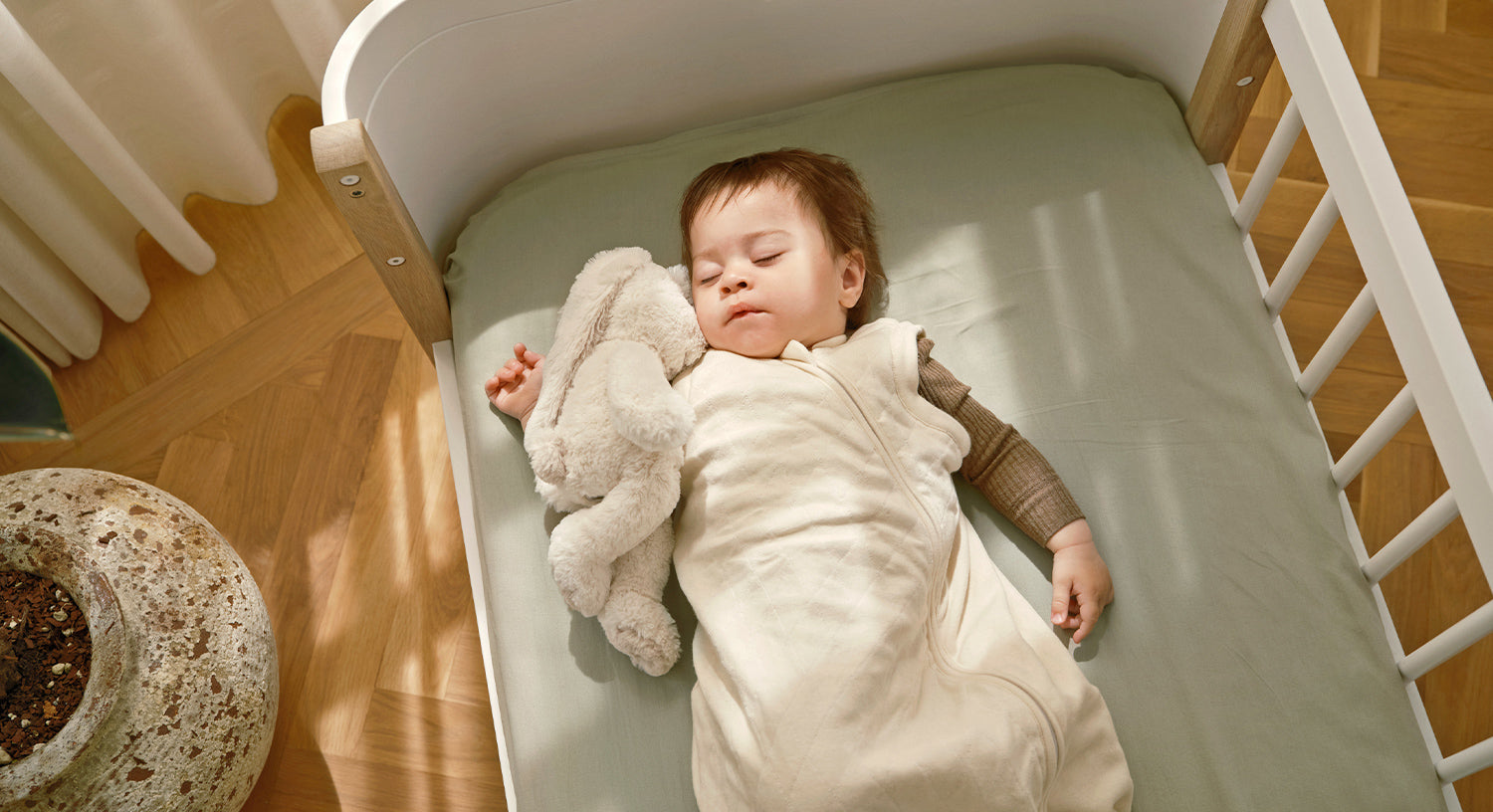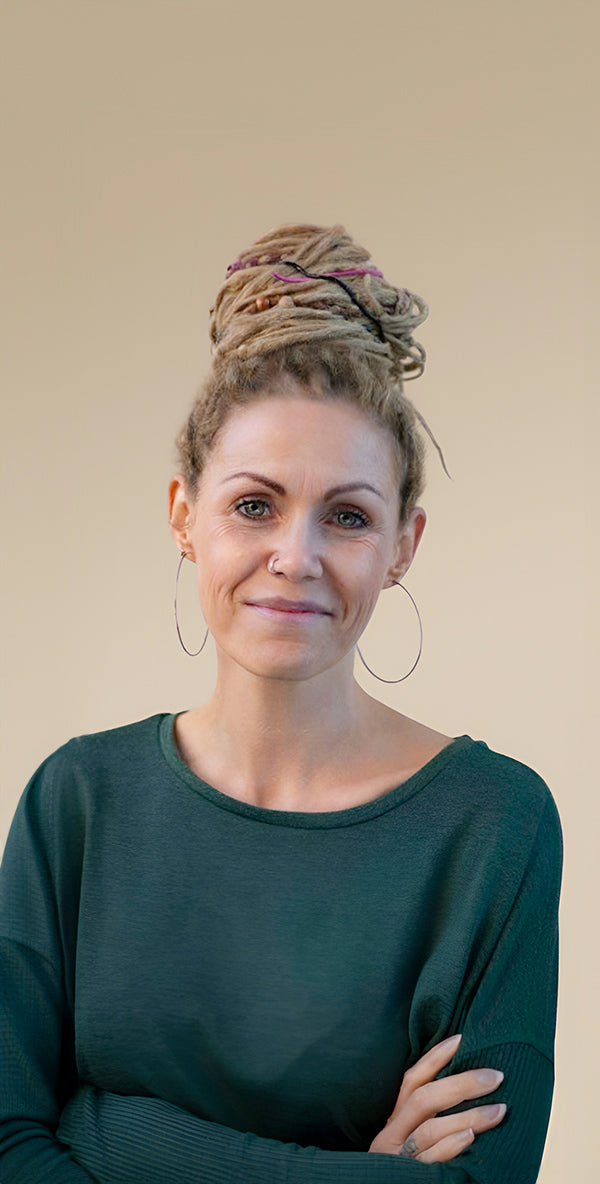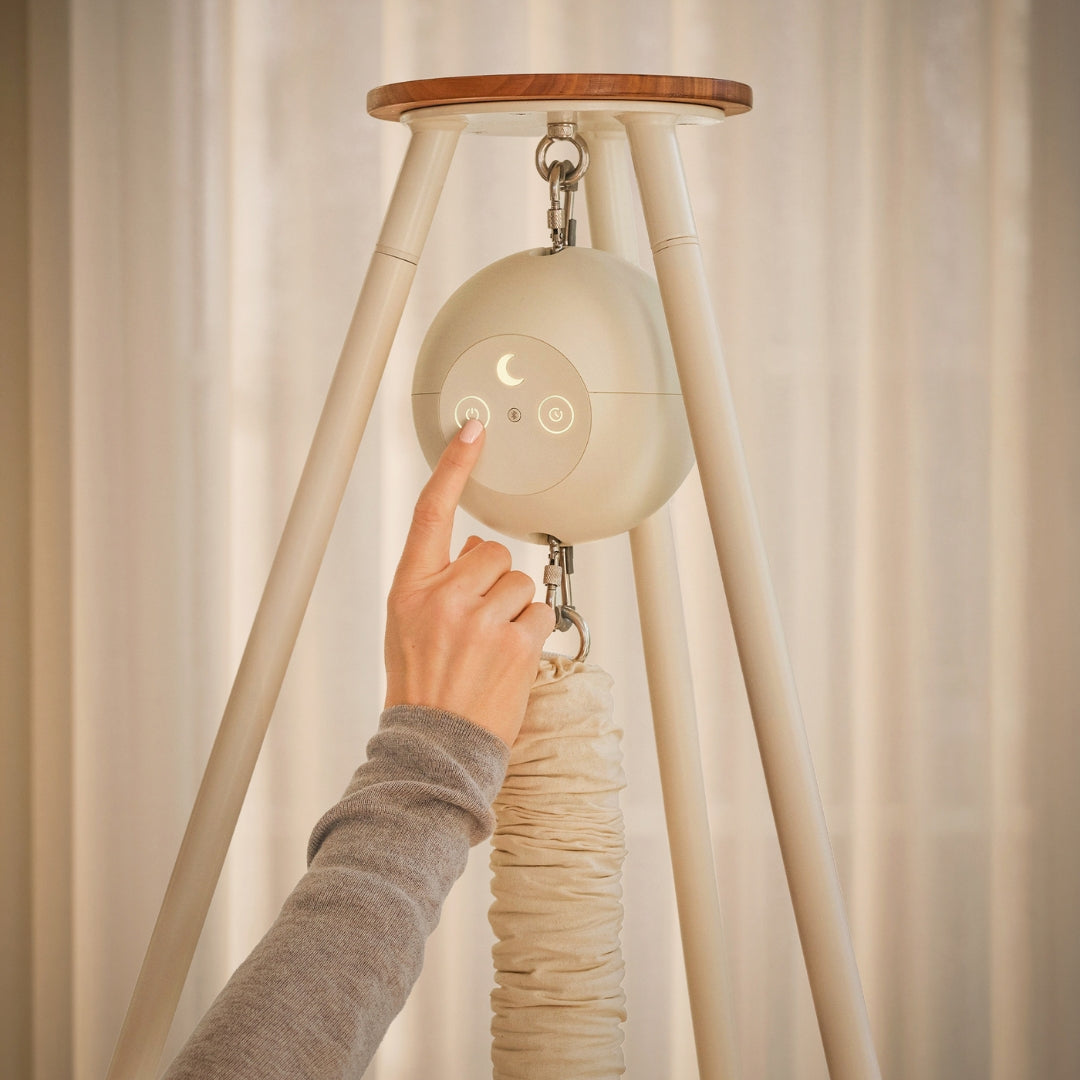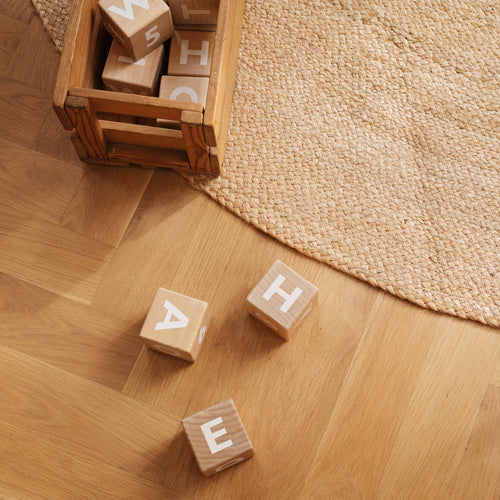


Musical boxes, teddy bears featuring the sound of the womb, a burp cloth that smells like milk and the beloved – or perhaps all-round hated – yoga ball? There are hardly any limits to what you are willing do to help your child fall asleep.
In this post, we will describe why your child needs help falling asleep and explain to you what works particularly well for many parents in your situation.
What is sleep support?
Sleep support covers all the things we do as parents to help our baby fall asleep. The vast majority of parents, for example, instinctively rock their tiny, newborn baby – it's simply in our nature to rock the little one and maybe even "shush" the baby a little to help him or her calm down.
In addition, the vast majority of parents also offer their baby breast or bottle milk. They pat the baby gently on the bottom, cuddle the baby, wrap the baby in a duvet, and maybe even sing a song while they dance around the room for a bit.
When the baby is newborn, all of this feels obvious. But what do you do when the baby is no longer a baby and possibly needs more than a song and a sip of milk to settle down?
Nothing changes. You still need to provide calm and attention. Your baby probably still needs help falling asleep and may even need your help for some years to come. The help needed, however, may vary over time. Try it out and find the method that works the best for you, and adapt when necessary.

Understanding your child's need for sleep support
In order for the baby to sleep, its autonomic nervous system must be at rest. We know that we are getting a bit scientific here, but it actually just means that the baby's body and brain must feel safe and taken care of.
The opposite of this is a child who is upset and in ‘fight or flight’ mode, which is every human being's built-in ‘alarm system’ when faced with possible or perceived danger. The baby's body first secretes adrenaline, and in case of a prolonged "alarm", it also secretes cortisol. In addition, the baby may start waving their arms and legs, try to escape from the cot, push themselves away from you when you try to put them to sleep, or cry inconsolably despite all attempts to comfort and soothe.
The adrenaline and the cortisol make it impossible for the child to fall asleep or may overwhelm the child's system, causing the system to shut down and push the child into sleep as a protection from the experience that upset them.
What does a baby perceive as "danger"?
It can be anything from the baby not being able to feel, see or smell mum or dad, to having a filled diaper that bothers them, or that they don't like lying in their cot. It can even be something as simple as your baby waking up before they were ready but not being able to fall back asleep.
In other words, the very small things that might be hard for us adults to understand can throw a child's nervous system out of balance.
Body contact and movement help sleep along
As a rule, babies are not able to go from "fight or flight" mode to being at rest again. As we have previously described in our blog post titled ‘What is normal baby sleep’, the vast majority of babies need to "borrow" the nearest adult's nervous system and require help when they need to return to a calm state.

Studies show that this kind of "borrowing" of the nervous system through body contact and movement is one of the most effective ways to help a baby return to a calm state. Overall, it can even shorten the frequency and the duration of the periods when the baby is restless or crying.
In fact, hospitals find that children, who are born prematurely or otherwise need help, recover more quickly and maintain their temperature, heart rate and oxygen saturation levels more easily when they have the opportunity to lie skin-to-skin on a parent.
Your beating heart, your soothing scent, and your body that gently touches and rocks the baby, all help to release the important oxytocin that helps regulate the baby's restless nervous system. Oxytocin also helps the child return to a calm state after having been upset, and, not least, fall asleep at bedtime.
Oxytocin in brief:
Oxytocin dampens stress-triggered responses in the brain's HPA (hypothalamic-pituitary-adrenal) axis and regulates cortisol (stress hormone) down to normal levels.
There is also a whole host of other hormones that play into that domino effect, but we will leave it at this, as we realise that this topic may be a tad too nerdy for this post.
Sleep support for tired parental arms and nervous systems
Now that we know how essential it is for the child to get this support in order to settle down and fall asleep, we shouldn't disregard the highly relevant topic of tired parental arms and bodies that need to charge their own nervous system in order to function properly. It can be really hard in the long run having to regulate not only oneself, but also one's child, especially if that child tends to cry a lot or needs frequent sleep support.
It is perfectly normal to seek some form of relief so that one is not "the only one on call" 24/7 every single day forever. Few people can stand it in the long run, no matter how much you love your baby and understand the importance of close contact and cradling.
Some place their child in a baby hammock, possibly a motorised one, or use a carrying device. Others jump on a yoga ball in front of the TV or go for a stroll with the pram; all in an attempt to help the child fall asleep – and stay asleep.
The baby hammock offers a solution that doesn't involve constant parental action. Otherwise, what these solutions have in common is that the child is helped in a way that tries to mimic arms holding and rocking it because that is simply what works.
It is all just a phase
Does your baby sleep all night in the baby hammock with the engine on? Is your baby sleeping while curled up in your armpit and in need of breastfeeding all night long? Has your baby fallen in love with the pram, so that you place it at the end of your double bed, while the cot mostly serves as a laundry basket?
No need to worry. Soon things will change, you can be sure of that. "It's just a phase", as you have probably been told by, for instance, a colleague with a slightly older child. Every step along the way is really just a phase, simply because your baby is developing at an extreme pace in the first years of life, as we also described in our blog post on Wonder weeks.
You may find that just when you thought you had solved the equation of how to get your baby to drift off to sleep satisfied and content – you are faced with a new phase that requires an altogether different kind of sleep support.
For some, it helps to repeat the mantra "It's just a phase" over and over again. Others almost feel like they'll go a bit dotty if they hear that phrase just one more time. However, there is no denying that babies truly live in the now, and before you know it, they have something new going on, which means that you will perhaps need to adjust your technique again.
Bad habits – or just "whatever works"?
No matter how you choose to help your baby rest and fall asleep, it is your choice as a parent. Forget about bad habits. Do not stress about whether your baby will ever learn to fall asleep unassisted. We promise you that it is going to happen over time – under normal circumstances.
Your baby just needs your help at first, sometimes through thousands of bedtime routines, to find peace and calm and fall asleep. Until the baby's nervous system is mature enough to attempt to regulate itself. Some babies already start practising after only a few months, whereas many others need a few years before they are ready to launch on their own sleep journey. Both patterns are completely normal, so you can rest assured that you have done nothing wrong if, for instance, the babies in your circle of friends and family do not need the same sleep support that works for your baby
Offering your child sleep support will never turn into a bad habit as long as it works for you and your child. And if, one day, it does not work anymore – then you can change course.
Summary
- Sleep support covers all the things we do as parents to help our baby fall asleep.
- The baby's body and brain need to feel safe and cared for in order to fall asleep.
- Body contact and movement are some of the most effective ways to help a baby calm down.
- A common form of sleep support is holding and rocking the baby. Or helping the baby in another way that tries to mimic arms holding and rocking the baby, using, for example, a baby hammock.
- Babies go through many different stages, needing different kinds of sleep support, so it is important to remember to listen and be adaptable.
- No matter how long your child needs sleep support, he or she will learn to fall asleep on their own over time.
- Offering your child help falling asleep should never be considered a bad habit as long as it works for you and your child.




































